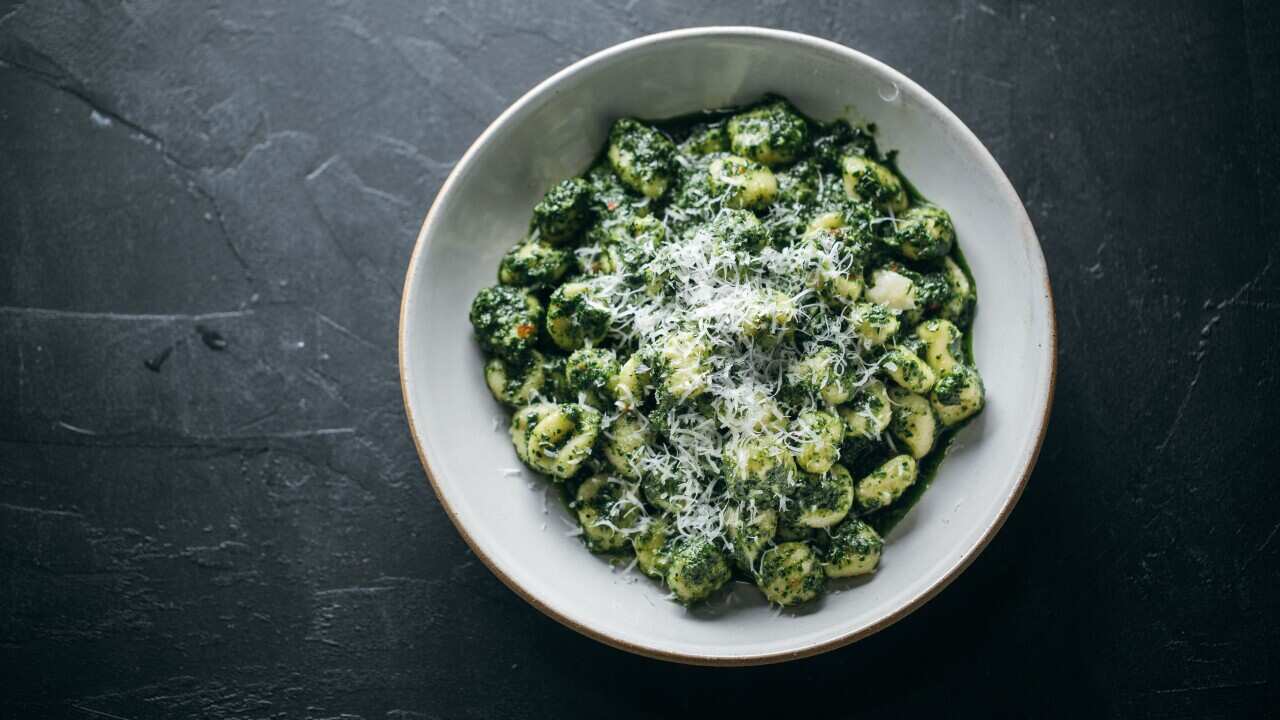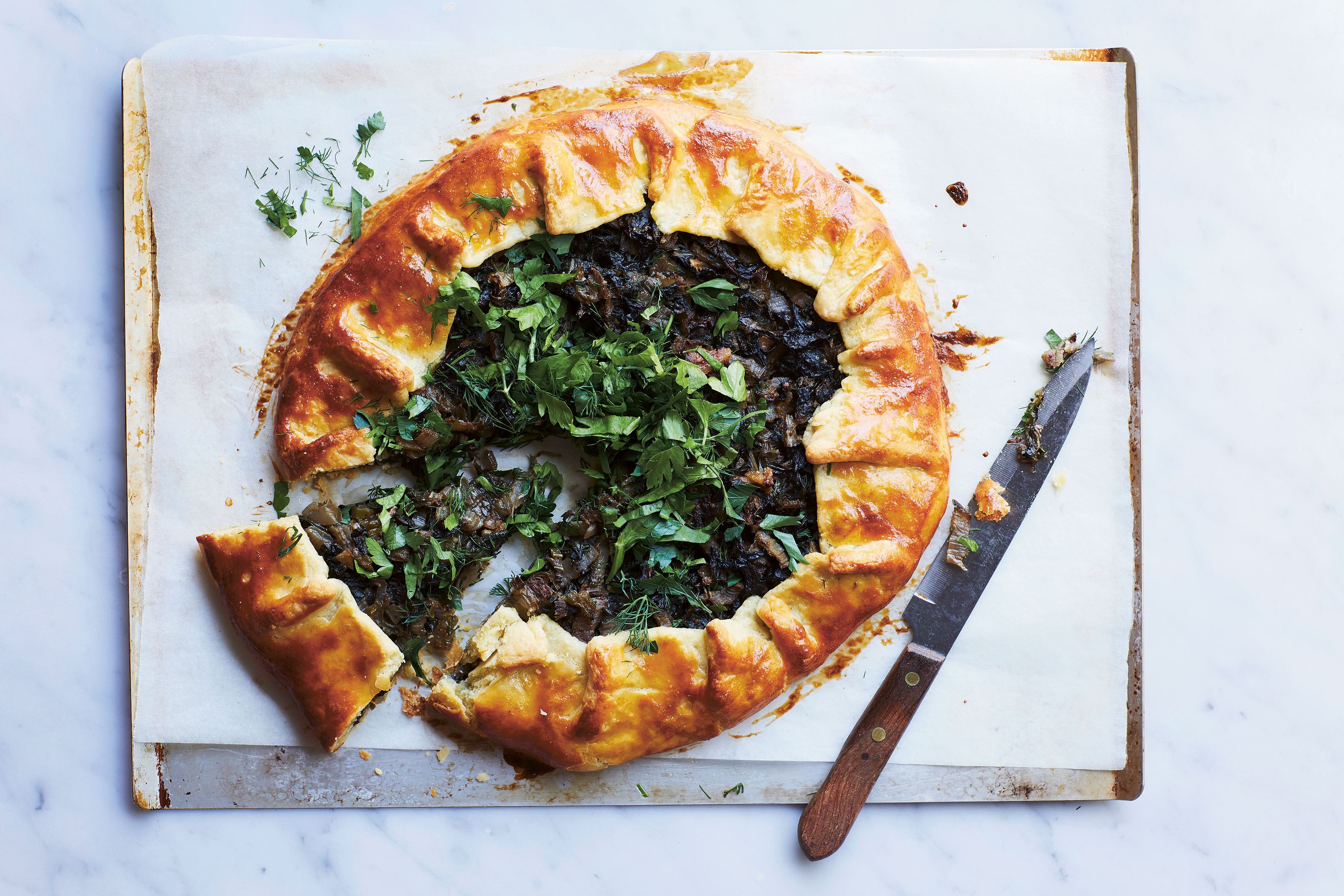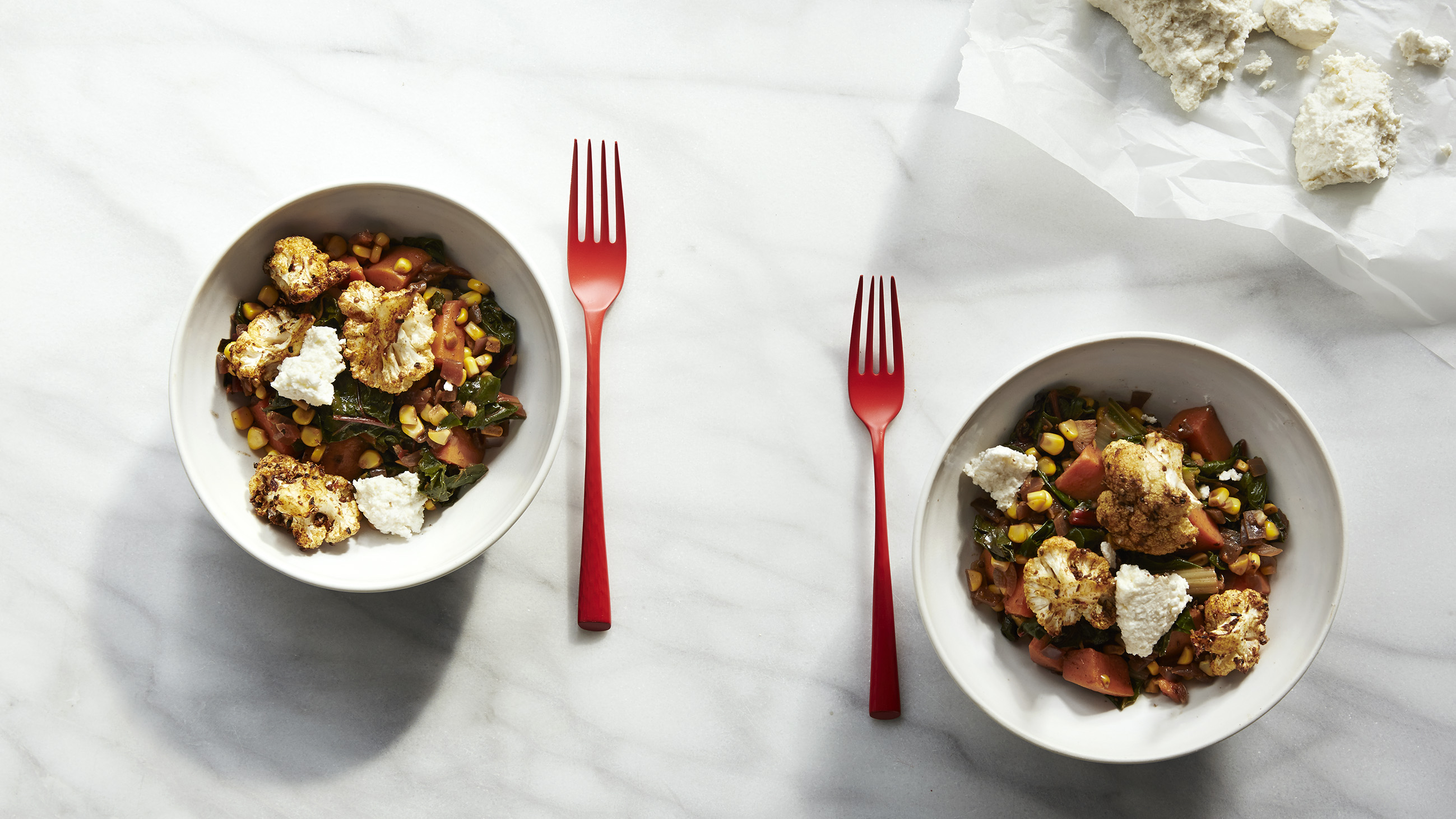Leafy greens have a reputation for being boring and bland, but with the right cooking techniques, they can be very flavoursome and versatile.
LEAFY GREEN PESTO

Gnocchi with cavolo nero pesto
Alex Elliott-Howery, cookbook author and owner of Cornersmith cafe and cooking school, thinks leafy greens are an "excellent foundation" for many dishes, including salads, pies, tarts, soups, stews and fritters.
"They're full of flavour, play nicely with other ingredients and are nutritional powerhouses," she says. Here are five underrated leafy greens to look out for on your next grocery shop.
Here are five underrated leafy greens to look out for on your next grocery shop.

Silverbeet galette. Source: Supplied
Mustard greens (gai choy or jiè cài)
Mustard greens are named so as the seeds of this plant are often used for making mustard. They're a part of the brassica family and have a similar taste to silverbeet or kale. Often used in Chinese and Japanese cooking, this versatile vegetable can be prepared like any other Asian green, as demonstrated by Adam Liaw, the host of SBS Food's The Cook Up.
Liaw says, "You can boil them, just as I did with my pak choy. You can stir fry them. You can steam them." It's worth noting that all parts of mustard greens are edible, including the leaves, seeds and stems. Alex Elliott-Howery loves stir-frying the leaves and stems with ginger and chilli. "Just remember the stems are tougher so they need longer cooking time. A quick blanch helps too."
It's worth noting that all parts of mustard greens are edible, including the leaves, seeds and stems. Alex Elliott-Howery loves stir-frying the leaves and stems with ginger and chilli. "Just remember the stems are tougher so they need longer cooking time. A quick blanch helps too."

Hand-cut noodles with mustard greens.
PORK AND MUSTARD GREENS

Why Hakka mei gan chai greens are pork's best friend
Chrysanthemum leaves
Lightly steamed or blanched, chrysanthemum greens have a distinctive, almost herbal taste, and are great additions to soups and stocks. Elliott-Howery suggests using the leaves in a lemony broth with shredded chicken and noodles. It's best to add the greens to the bowl before pouring over the hot soup.
They're full of flavour, play nicely with other ingredients and are nutritional powerhouses.
In Japanese cuisine, chrysanthemum greens are commonly paired with a sesame dressing (goma-ae). The nutty dressing provides a contrast to the plant's grassy flavour.
These greens also pair well with earthy ingredients like mushrooms and root vegetables, and they are commonly eaten in hot pot. If the greens are young and tender, you can eat the leaves and stalks raw in salads. However, as they mature, they become bitter and are best enjoyed in cooked form.
If the greens are young and tender, you can eat the leaves and stalks raw in salads. However, as they mature, they become bitter and are best enjoyed in cooked form.

Seafood hot pot with chrysanthemum leaves (top left). Source: Alan Benson
NOW YOU KNOW

How well do you know your Vietnamese herbs?
Cavalo nero
Cavalo nero is curly kale's taller, darker and slightly sweeter sibling. Its earthy flavour reminds Elliott-Howery of mushrooms, beetroots and lentils, with nutty, peppery and slightly metallic undertones.
This leafy green has a long history in Italian cuisine and is a core ingredient in dishes like ribollita soup and gnocchi pesto. Elliott-Howery enjoys cavalo nero "sauteed with lots of garlic and anchovies and tossed through hot buttery pasta", or lightly blanched with salt as a side dish.
Elliott-Howery enjoys cavalo nero "sauteed with lots of garlic and anchovies and tossed through hot buttery pasta", or lightly blanched with salt as a side dish.

Gnocchi with cavalo nero pesto. Source: Adam Liaw
HEARTY RIBOLLITA

Ribollita
Rainbow chard
Rainbow chard is one of the easiest leafy greens to grow in your backyard. The broad leaves are like a milder version of spinach with bitter undertones. Meanwhile, their celery-like stalks, which can be red, pink, purple, orange or golden, are reminiscent of beetroot. Rainbow chard is a great substitute for spinach in sautés or stir-fries. Use the leaves and stems to keep the texture interesting.
Rainbow chard is a great substitute for spinach in sautés or stir-fries. Use the leaves and stems to keep the texture interesting.

Rainbow chard gives dishes a crimson glow. Source: Sharyn Cairns
"I slice any green stems finely and sauté them in a frying pan with olive oil and a generous amount of salt and pepper for about 10 minutes," Elliott-Howery explains.
"Then I add big flavours like chilli, garlic, lemon or fennel seeds, and keep cooking until they're tender. Then, stir through a few tablespoons of yoghurt and chopped herbs." You can eat this with fish, flatbreads, hummus and meatballs or just on toast.





